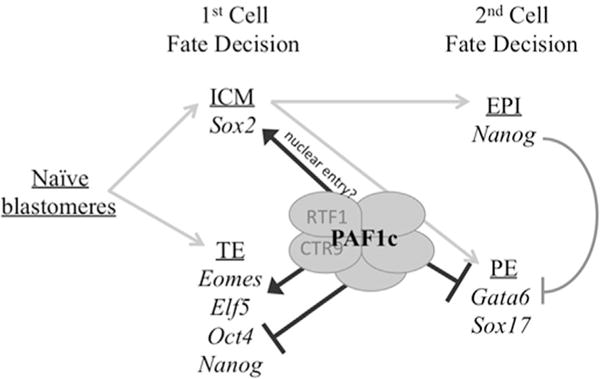Fig. 8.

PAF1c function during early lineage decisions. Our data suggests that PAF1c is required for molecular identity of ICM and TE cells after the first cell fate decision. Loss of function of CTR9 or RTF1 results in increased OCT4 and NANOG positive TE cells, suggesting that PAF1c normally represses Oct4 and Nanog in TE. Additionally, we document an absence of nuclear SOX2 in the ICM, indicating that PAF1c function may be required for nuclear entry of SOX2 which also contributes to TE and PE lineage specification through FGF signaling. Additionally, fewer GATA6-positive and Sox17-positive cells are present in dsCtr9 embryos suggesting that PAF1c is required for activation of these PE markers. Together, these findings suggest a theme that at each lineage decision, PAF1c regulates some factors that must be repressed in pluripotent cells (OCT4, NANOG) and others that must be activated in differentiating cells (EOMES and ELF5 in TE, GATA6 and SOX17 in PE) in order for successful lineage decisions and function.
